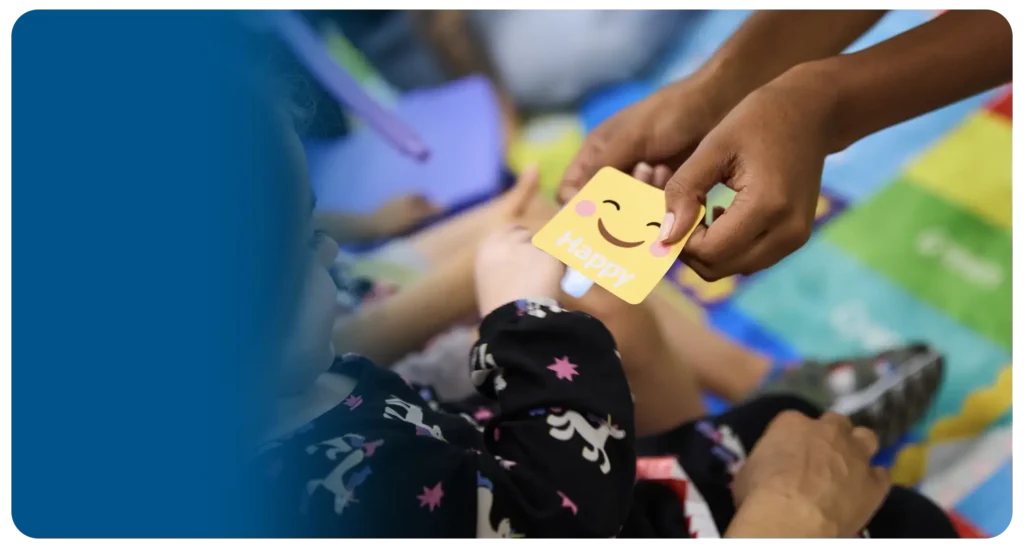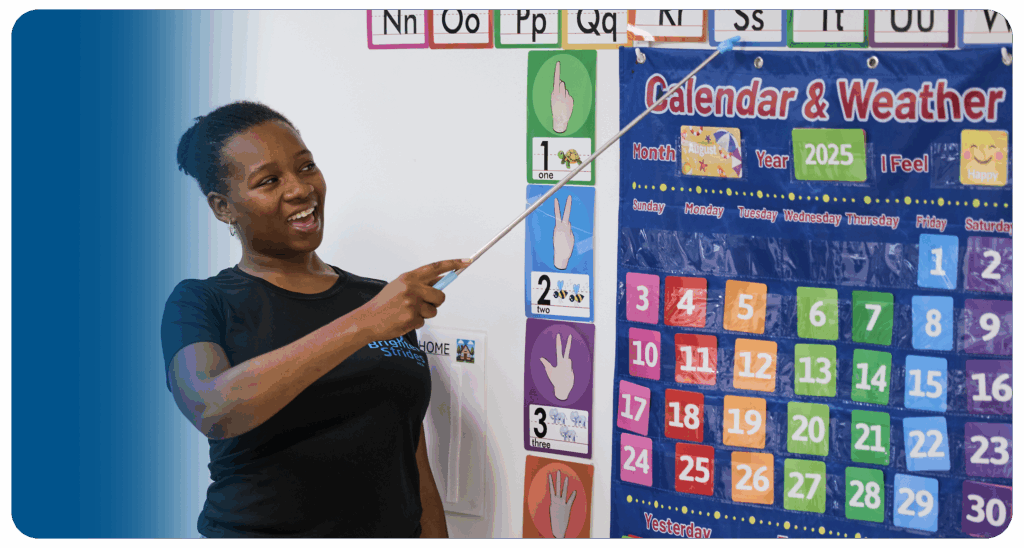Understanding Autism Spectrum Disorder
Autism Spectrum Disorder (ASD) is a neurodevelopmental disorder characterized by difficulties in social interaction, communication, and repetitive patterns of behavior. It is a complex condition with a wide range of symptoms and varying levels of severity. Understanding the key aspects of ASD and the importance of early diagnosis and intervention are crucial in supporting individuals with autism.
What is Autism Spectrum Disorder?
Autism Spectrum Disorder (ASD) is a lifelong condition that affects the way a person communicates, interacts, and perceives the world around them. It is typically diagnosed in early childhood, often before the age of three, although some individuals may receive a diagnosis later in life.

ASD encompasses a spectrum of symptoms and behaviors, ranging from mild to severe. Common features of ASD include challenges in social interaction and communication, restricted interests, repetitive behaviors, and sensory sensitivities. However, it’s important to note that each individual with ASD is unique, and the manifestation of these characteristics can vary greatly.
Early Diagnosis and Intervention
Early diagnosis and intervention play a crucial role in effectively supporting individuals with autism spectrum disorder. Research indicates that early identification and intervention, particularly during the preschool years or earlier, can have significant positive effects on symptoms and later skills in individuals with ASD.
Early signs of ASD may include delayed language development, lack of social engagement, repetitive behaviors, and sensory sensitivities. If parents or caregivers notice these signs, it is important to seek professional evaluation from healthcare providers or specialists experienced in diagnosing ASD.
Early intervention programs tailored to the specific needs of each individual are essential for maximizing outcomes. These interventions may include behavioral and communication therapies, social skills training, and educational support. By providing structured and specialized programs, individuals with ASD can experience symptom reduction and develop skills to navigate daily activities more effectively.
It is important to remember that treatment should focus on the individual’s specific needs rather than solely focusing on the diagnostic label. Autism symptoms can overlap with other conditions, such as attention deficit hyperactivity disorder (ADHD). Tailoring interventions to address the unique challenges and strengths of each individual is crucial for effective support and intervention.
By understanding what autism spectrum disorder entails and recognizing the importance of early diagnosis and intervention, we can create a more inclusive and supportive environment for individuals with autism. Through targeted interventions and individualized support, we can empower individuals with ASD to thrive and reach their full potential.
Treatment Approaches for Autism
When it comes to treating Autism Spectrum Disorder (ASD), a variety of approaches are available to help individuals manage their symptoms and improve their quality of life. These treatment approaches focus on individualized plans tailored to the specific needs of each person with autism. In this section, we will explore three common treatment approaches: individualized treatment plans, behavioral and social interventions, and developmental and educational therapies.
Individualized Treatment Plans
Individualized treatment plans are designed to address the unique challenges and strengths of each individual with autism. These plans take into account the specific needs, preferences, and goals of the person with autism, as well as the support of their family or caregivers.
By working closely with a team of professionals, including behavioral therapists, speech therapists, and occupational therapists, an individualized treatment plan can be created. This plan may include a combination of different interventions and therapies tailored to the specific needs of the person with autism.
Behavioral and Social Interventions
Behavioral approaches, particularly Applied Behavior Analysis (ABA), have shown significant evidence in treating symptoms of ASD. ABA focuses on encouraging desired behaviors and discouraging undesired behaviors to enhance various skills, with progress tracked and measured. Two common teaching styles within ABA are Discrete Trial Training (DTT) and Pivotal Response Training (PRT).
Social-relational treatments aim to improve social skills and construct emotional bonds. These interventions may involve working with parents or peer mentors to enhance social interactions and develop social skills [2].
Developmental and Educational Therapies
Developmental and educational therapies play a significant role in the treatment of autism. These therapies focus on enhancing communication skills, independent living skills, and overall development.
Speech and Language Therapy is often utilized to improve communication skills in individuals with ASD. This therapy helps individuals develop effective communication strategies and overcome language-related challenges.
Occupational Therapy is another crucial component of developmental therapy for individuals with autism. It focuses on teaching independent living skills, such as dressing, eating, bathing, and social interaction. Occupational therapists work with individuals with autism to develop the necessary skills for daily life.
The Early Start Denver Model (ESDM) is an example of a developmental therapy approach that utilizes play and social exchanges in natural settings to enhance language, social, and learning skills in children aged 12-48 months [2].
Educational treatments, such as the Treatment and Education of Autistic and Related Communication-Handicapped Children (TEACCH) approach, emphasize consistency and visual learning to enhance academic and other outcomes for individuals with autism [2].
By implementing a combination of these treatment approaches, individuals with autism can receive the necessary support and interventions to help manage their symptoms, enhance their skills, and promote their overall well-being. It is important to remember that treatment plans should be individualized and adapted based on the specific needs and goals of each person with autism.
Language and Identity in Autism Discourse
In discussions surrounding autism, language plays a crucial role in shaping perceptions and attitudes towards autistic individuals. The impact of language on autistic individuals is a topic that warrants careful consideration and understanding. This section will explore the impact of language, the debate between identity-first and person-first language, and the importance of inclusive and respectful communication.
The Impact of Language on Autistic Individuals
The way autism is described and framed in language can have significant effects on how society views and treats autistic individuals. Describing autism in negative terms and as something that needs to be fixed can have detrimental consequences, perpetuating stigma and shaping negative perceptions. It is crucial to adopt language that respects the diversity and unique experiences of autistic individuals, ensuring that they are seen as valuable members of society.
Identity-First vs. Person-First Language
The choice between identity-first language and person-first language is an ongoing debate within the autism community. Identity-first language, such as “autistic person,” emphasizes the person’s identity as an autistic individual. Advocates argue that this language recognizes autism as an inherent part of an individual’s identity and promotes self-acceptance and empowerment.
On the other hand, person-first language, such as “person with autism,” places emphasis on the personhood before the condition. Proponents of person-first language believe that it prioritizes the individual’s humanity and reduces the risk of defining them solely by their diagnosis.
While there is no complete consensus among the autistic community regarding language preferences, it is important for researchers and professionals to consider the majority preferences of autistic individuals and existing recommendations by academic and professional organizations. Adopting language that respects individual preferences can contribute to fostering a more inclusive and respectful environment for autistic individuals.
Inclusive and Respectful Communication
Inclusive and respectful communication is essential when discussing autism. Many commonly used terms and phrases in autism research, such as “high-functioning” and “low-functioning,” can be stigmatizing and inaccurate in reflecting the experiences and capabilities of autistic individuals. It is crucial for researchers and professionals to use more specific and accurate descriptors when discussing abilities and support needs, avoiding broad generalizations that may perpetuate stereotypes.
To ensure inclusive and respectful communication, researchers are encouraged to adopt participatory models of autism research. This involves including autistic individuals in the research process, elevating their voices, and incorporating their perspectives and priorities. Such an approach can lead to research that better aligns with the preferences and needs of the autistic community.
By being mindful of the impact of language, embracing inclusive communication, and involving autistic individuals in the research process, we can work towards creating a society that respects and values the diverse experiences and identities of autistic individuals.
Possibilities of Recovery in Autism
While complete recovery from autism spectrum disorder (ASD) is extremely rare, there have been a few reported cases of recovery after a period of therapeutic intervention. It’s important to note that improvement can occur in pervasive developmental disorders (PDD), but complete recovery is generally not observed. Symptoms may remit with age, but new challenges may arise, indicating that the disorder persists.
Rare Cases of Recovery
Although rare, there have been instances where individuals with autism have shown significant improvement. One case report described a spontaneous recovery without any specific intervention in just 13 days, which is an exceptional and unexplained occurrence. However, it is important to approach such cases with caution, as individual responses to interventions and outcomes can vary significantly.
Factors Influencing Recovery
The factors that may influence recovery in ASD are multifaceted and complex. While research is ongoing in this area, there are several factors that researchers and clinicians consider when assessing the potential for recovery. Some of these factors include:
- Early intervention: Early diagnosis and intervention play a crucial role in the overall development and progress of individuals with autism. Timely access to appropriate therapies and support can enhance the chances of positive outcomes.
- Individualized treatment plans: Tailoring treatment plans to meet the unique needs of each individual is vital. A personalized approach allows for targeted interventions that address specific challenges and promote growth and development.
- Supportive environment: A nurturing and supportive environment, both at home and in educational settings, can contribute to a child’s progress. Creating an inclusive and understanding atmosphere can help individuals with autism thrive and reach their full potential.
- Therapeutic interventions: Various behavioral and social interventions, as well as developmental and educational therapies, contribute to the overall well-being and progress of individuals with autism. These interventions focus on enhancing communication skills, social interactions, and adaptive behaviors.
It is essential to approach the topic of recovery in autism with realistic expectations. While significant progress and improvement can occur, complete recovery is considered extremely rare. The focus should be on providing support, interventions, and resources that enable individuals with autism to lead fulfilling and meaningful lives, based on their unique strengths and abilities.
Ongoing Research in Autism
As research in the field of autism continues to advance, experts are exploring various avenues to improve understanding and develop more effective treatments. This ongoing research focuses on areas such as biomarkers and personalized medicine, advancements in treatment approaches, and the importance of diversity and inclusion in research.
Biomarkers and Personalized Medicine
Biomarkers play a crucial role in autism research, aiming to provide measurable biological features that can offer insight into the clinical condition. Researchers are utilizing techniques such as electroencephalography (EEG) to assess brain function, eye tracking for visual attention, and behavior and speech recordings. These biomarkers help in assessing stability over time in children with autism and may facilitate the testing of medications in less heterogeneous groups in the future.
A validated biomarker for autism is a significant focus for researchers, as it could lead to more effective treatments and interventions. By identifying specific biological characteristics associated with autism, clinicians can develop targeted therapies and interventions tailored to an individual’s unique needs.
Advancements in Treatment Approaches
Advancements in treatment approaches for autism are continuously being explored. Researchers and clinicians are developing individualized treatment plans that take into account the unique strengths and challenges of each individual with autism. This person-centered approach ensures that interventions are tailored to the specific needs of the individual, maximizing their potential for growth and development.
Behavioral and social interventions, such as Applied Behavior Analysis (ABA), have shown promising results in improving social communication skills, reducing challenging behaviors, and enhancing overall functioning in individuals with autism. Developmental and educational therapies, including speech and occupational therapy, also play a vital role in addressing specific areas of difficulty and promoting skill acquisition.
The goal of these advancements is to provide individuals with autism the necessary tools and support to lead fulfilling lives, maximizing their potential for independence and social integration.
Diversity and Inclusion in Research
Efforts to promote diversity and inclusion in autism research are essential for the development of more inclusive and effective treatments. Historically, lack of diversity in genetic databases has limited our understanding of the genetic factors contributing to autism. To address this, researchers are working to include children from underrepresented minority groups in clinical trials and genetic studies [5]. By doing so, they aim to ensure that future treatments and therapies are accessible to all children, regardless of their ethnic background or ancestry.
Promoting diversity and inclusion allows for a more comprehensive understanding of autism and ensures that research findings are applicable to a broader range of individuals. It also helps to reduce biases and challenges associated with the stigmatization of autism, leading to more inclusive practices in both research and society.
As ongoing research continues to shed light on the complexities of autism, these efforts in biomarkers, personalized medicine, advancements in treatment approaches, and diversity and inclusion in research hold promise for the future. They offer hope for improved understanding, more effective interventions, and ultimately, a better quality of life for individuals on the autism spectrum.
Debunking Myths and Addressing Stigma
When it comes to autism, there are various myths and misconceptions that perpetuate stigma and misunderstanding. In this section, we will address some of these myths, critique ableist research, explore the evolution of autism theories, and discuss the importance of moving towards inclusive practices.
Criticisms of Ableist Research
Autism research has faced criticism for being ableist and focusing on autistic individuals’ perceived deficits relative to non-autistic individuals. This approach often inaccurately describes autistic people as lacking core human capacities and being incapable of social reciprocity or contributing to shared culture. Such stigmatization can lead to significant negative impacts on the lives of autistic individuals, including limited opportunities and exclusion.
Moreover, many avenues of autism research that were initially promoted as scientific advances have been debunked or shown to have less explanatory value than initially proposed. These research programs often relied on ableist assumptions about autism that informed researcher perspectives. It is essential to critically evaluate the underlying assumptions and biases in autism research to ensure a more accurate understanding of autism and promote inclusive practices.
Evolution of Autism Theories
Over the years, autism theories have evolved as researchers’ understanding of the condition deepened. Early psychogenic theories, such as the “refrigerator mother” theory, which suggested that autism resulted from emotionally distant parenting, have been widely rejected. These theories were based on ableist assumptions and lacked scientific evidence.
Similarly, biogenic theories that attributed autism to external toxins or heavy metals in the bloodstream have also been widely considered debunked. Such theories perpetuated the notion that autism is a result of biological “damage” and promoted simplistic cures, which are not supported by scientific evidence.
Moving Towards Inclusive Practices
Addressing stigma and promoting inclusivity is crucial when discussing autism. It is essential to challenge ableist perspectives and advocate for a more comprehensive understanding of autism that recognizes the strengths and contributions of autistic individuals. This involves using respectful and inclusive language that acknowledges the identity and experiences of autistic people.
By moving towards inclusive practices, society can create a more accepting and supportive environment for autistic individuals. This includes prioritizing the voices and perspectives of autistic individuals in research, policy-making, and advocacy efforts. By centering the experiences and needs of autistic individuals, we can work towards fostering a more inclusive society that values neurodiversity.
Debunking myths and addressing stigma is an ongoing process that requires continuous education, awareness, and reflection. By challenging ableist research, understanding the evolution of autism theories, and embracing inclusive practices, we can empower autistic individuals and promote a more inclusive and understanding society.
References
- https://www.nichd.nih.gov/health/topics/autism/conditioninfo/treatments
- https://www.cdc.gov/ncbddd/autism/treatment.html
- https://www.ncbi.nlm.nih.gov/pmc/articles/PMC8992888/
- https://www.ncbi.nlm.nih.gov/pmc/articles/PMC2772235/
- https://www.chla.org/research/blog/news-and-innovation/future-autism-treatment
- https://www.ncbi.nlm.nih.gov/pmc/articles/PMC10514488/





